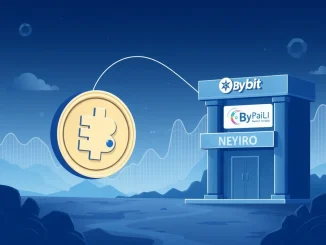
A significant movement of Bitcoin (BTC) has caught the attention of on-chain analysts. Specifically, a large Bitcoin deposit totaling 560 BTC was recently sent to major cryptocurrency exchanges, raising questions about potential market impact.
Decoding the Bitcoin Deposit: Where Did It Go?
According to insights shared by on-chain analyst @ai_9684xtpa on X, an address identified as being associated with the Lorenzo Protocol initiated the transfer. The 560 BTC was moved to two of the world’s largest crypto trading platforms: Binance and OKX. This substantial transfer occurred within the last ten hours, making it a very recent development in the market landscape.
The Lorenzo Protocol Connection and Acquisition Cost
The address linked to the Lorenzo Protocol, a Bitcoin liquidity aggregation layer, is notable because the BTC involved wasn’t acquired recently. The analysis indicates these 560 BTC were originally withdrawn from exchanges between October and November 2024. At that time, the average acquisition price for this specific holding was approximately $72,835 per BTC.
Understanding the acquisition cost is key to assessing the potential motivation behind the current deposit. Holders who move large amounts of BTC to exchanges often do so with the intent to sell, although other reasons like rebalancing or operational needs are also possible.
BTC to Exchanges: Potential Profit and Market Implications
When a large amount of BTC to exchanges like Binance and OKX occurs, it typically signals a potential increase in selling pressure. The recipient exchanges, Binance deposit and OKX deposit, are primary venues for trading, making them the logical destination for assets intended for sale.
Given the original acquisition price of $72,835, the current market value of 560 BTC represents a significant unrealized gain. If these holdings were to be sold at current market prices, the estimated profit could be around $11.86 million. This figure highlights the substantial gains accrued by the holder since late 2024.
It’s also interesting to look back at the peak unrealized gains. During Bitcoin’s all-time high last year, the potential profit on this specific 560 BTC holding had soared to as much as $18.65 million. While the current potential profit is less than the peak, it remains a substantial amount.
Key Figures:
- Amount Deposited: 560 BTC
- Destination: Binance, OKX
- Source: Lorenzo Protocol-linked address
- Original Acquisition Price (Avg): ~$72,835
- Current Potential Profit (Est): ~$11.86 million
- Peak Potential Profit (Est): ~$18.65 million
What Could This Bitcoin Deposit Mean?
The movement of 560 BTC from a Lorenzo Protocol-linked address to major exchanges prompts several questions:
- Is it Selling Pressure? The most common interpretation of large deposits to exchanges is preparation for selling. This could add temporary selling pressure to the market.
- Is it Operational? Could this transfer be related to the operational needs or treasury management of the Lorenzo Protocol itself? Perhaps for liquidity provision or other protocol functions?
- Is it Rebalancing? The address might be rebalancing its portfolio or moving assets for strategic reasons unrelated to immediate selling.
On-chain data provides visibility into movements but doesn’t always reveal the exact intent. Market participants will be watching to see if these deposited funds are indeed sold.
Summary: Keeping an Eye on Large BTC Movements
The recent Bitcoin deposit of 560 BTC from an address linked to the Lorenzo Protocol into Binance deposit and OKX deposit wallets is a notable event. While the potential profit of over $11 million is clear based on the original acquisition cost, the ultimate purpose of this transfer remains subject to speculation. Large movements of BTC to exchanges are always worth monitoring as they can potentially influence short-term market dynamics. As always, it’s important to consider various possibilities when interpreting on-chain data.



